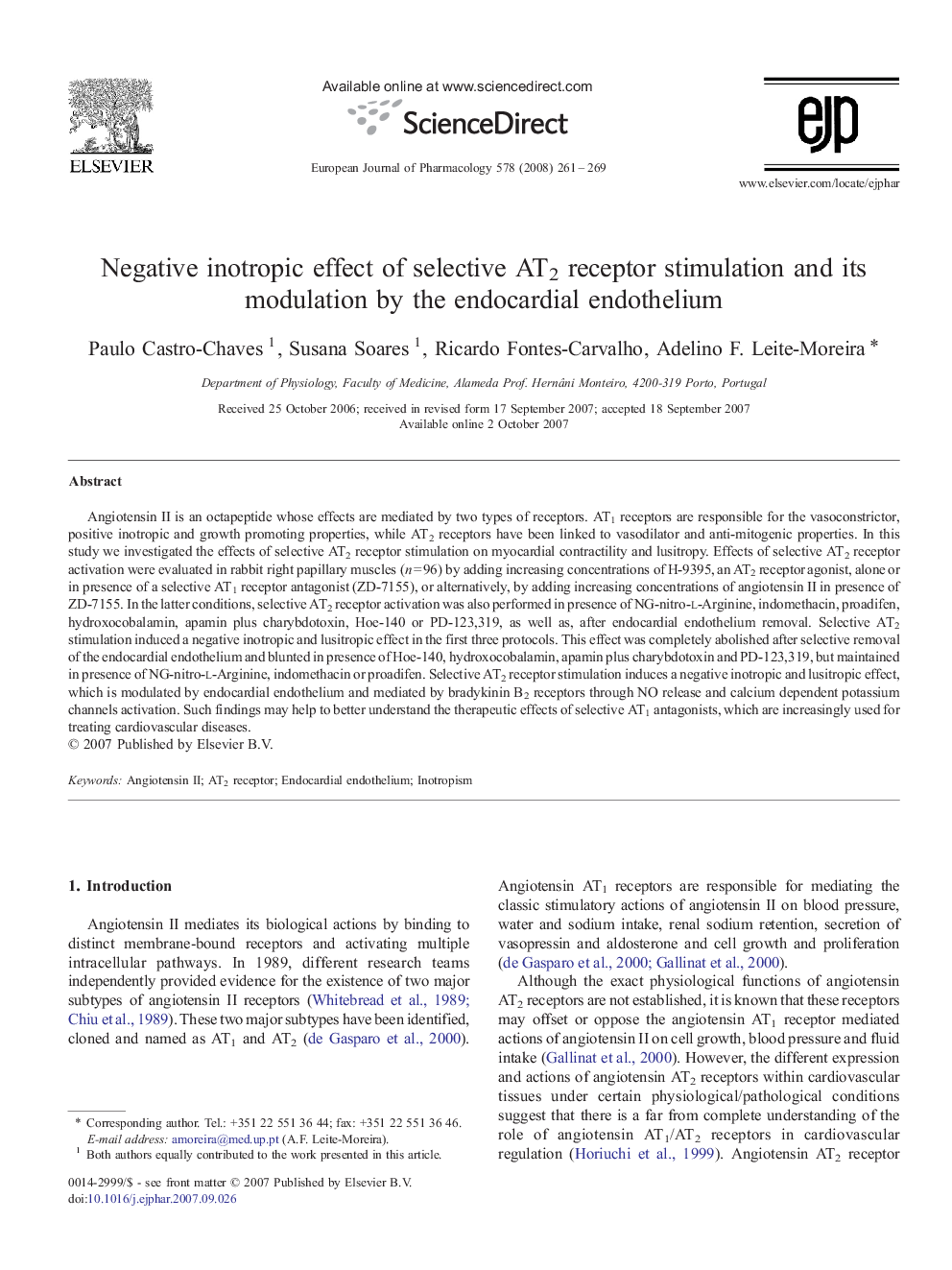| Article ID | Journal | Published Year | Pages | File Type |
|---|---|---|---|---|
| 2535747 | European Journal of Pharmacology | 2008 | 9 Pages |
Angiotensin II is an octapeptide whose effects are mediated by two types of receptors. AT1 receptors are responsible for the vasoconstrictor, positive inotropic and growth promoting properties, while AT2 receptors have been linked to vasodilator and anti-mitogenic properties. In this study we investigated the effects of selective AT2 receptor stimulation on myocardial contractility and lusitropy. Effects of selective AT2 receptor activation were evaluated in rabbit right papillary muscles (n = 96) by adding increasing concentrations of H-9395, an AT2 receptor agonist, alone or in presence of a selective AT1 receptor antagonist (ZD-7155), or alternatively, by adding increasing concentrations of angiotensin II in presence of ZD-7155. In the latter conditions, selective AT2 receptor activation was also performed in presence of NG-nitro-l-Arginine, indomethacin, proadifen, hydroxocobalamin, apamin plus charybdotoxin, Hoe-140 or PD-123,319, as well as, after endocardial endothelium removal. Selective AT2 stimulation induced a negative inotropic and lusitropic effect in the first three protocols. This effect was completely abolished after selective removal of the endocardial endothelium and blunted in presence of Hoe-140, hydroxocobalamin, apamin plus charybdotoxin and PD-123,319, but maintained in presence of NG-nitro-l-Arginine, indomethacin or proadifen. Selective AT2 receptor stimulation induces a negative inotropic and lusitropic effect, which is modulated by endocardial endothelium and mediated by bradykinin B2 receptors through NO release and calcium dependent potassium channels activation. Such findings may help to better understand the therapeutic effects of selective AT1 antagonists, which are increasingly used for treating cardiovascular diseases.
